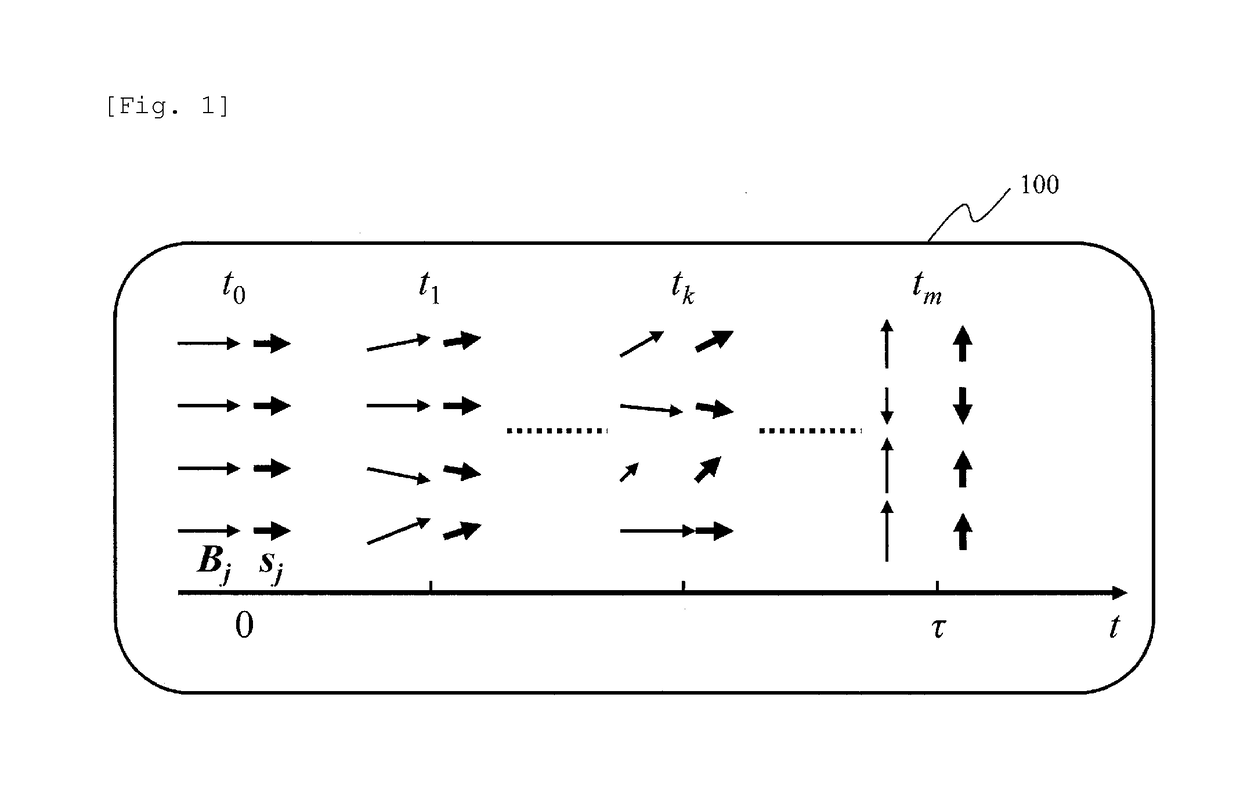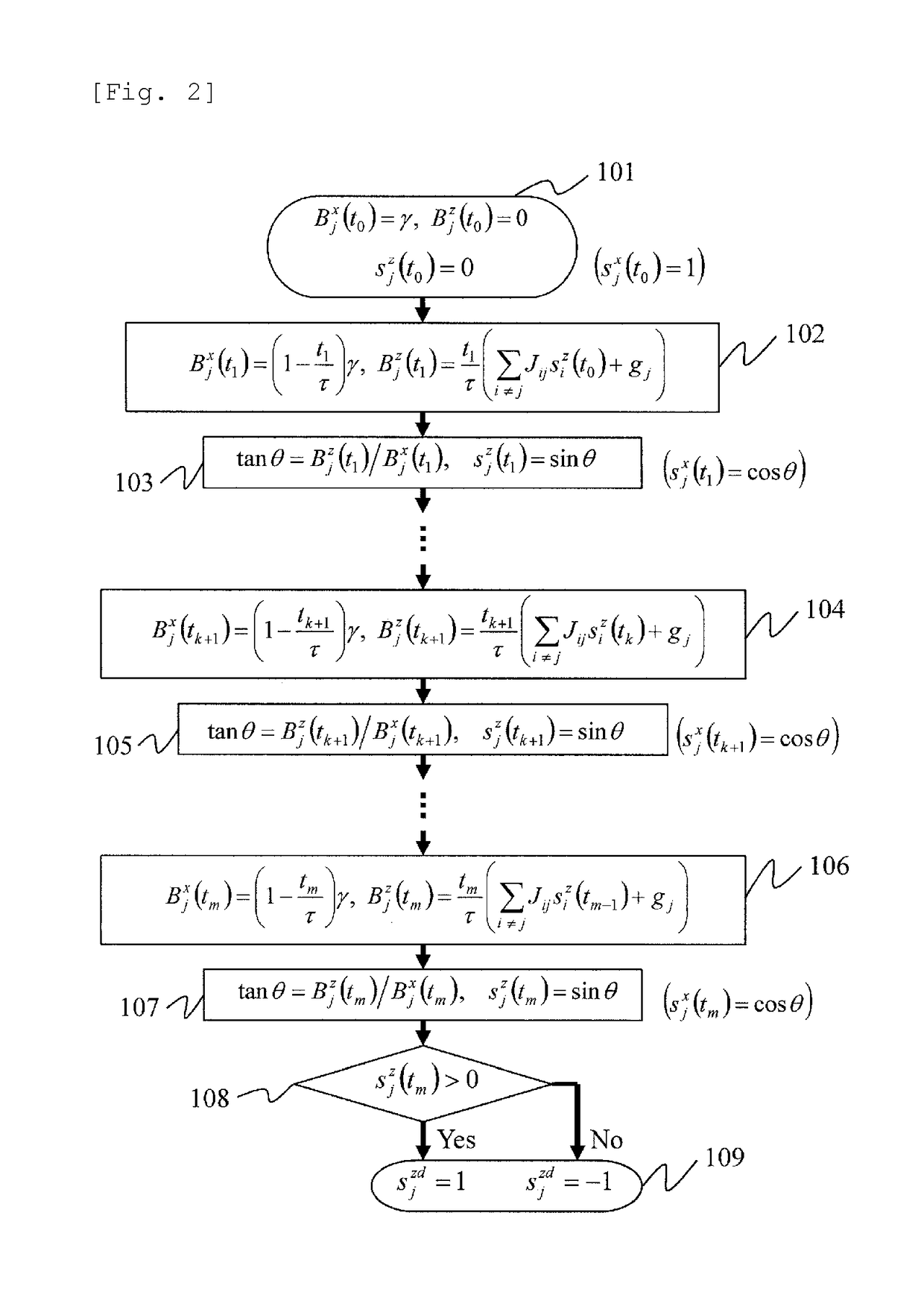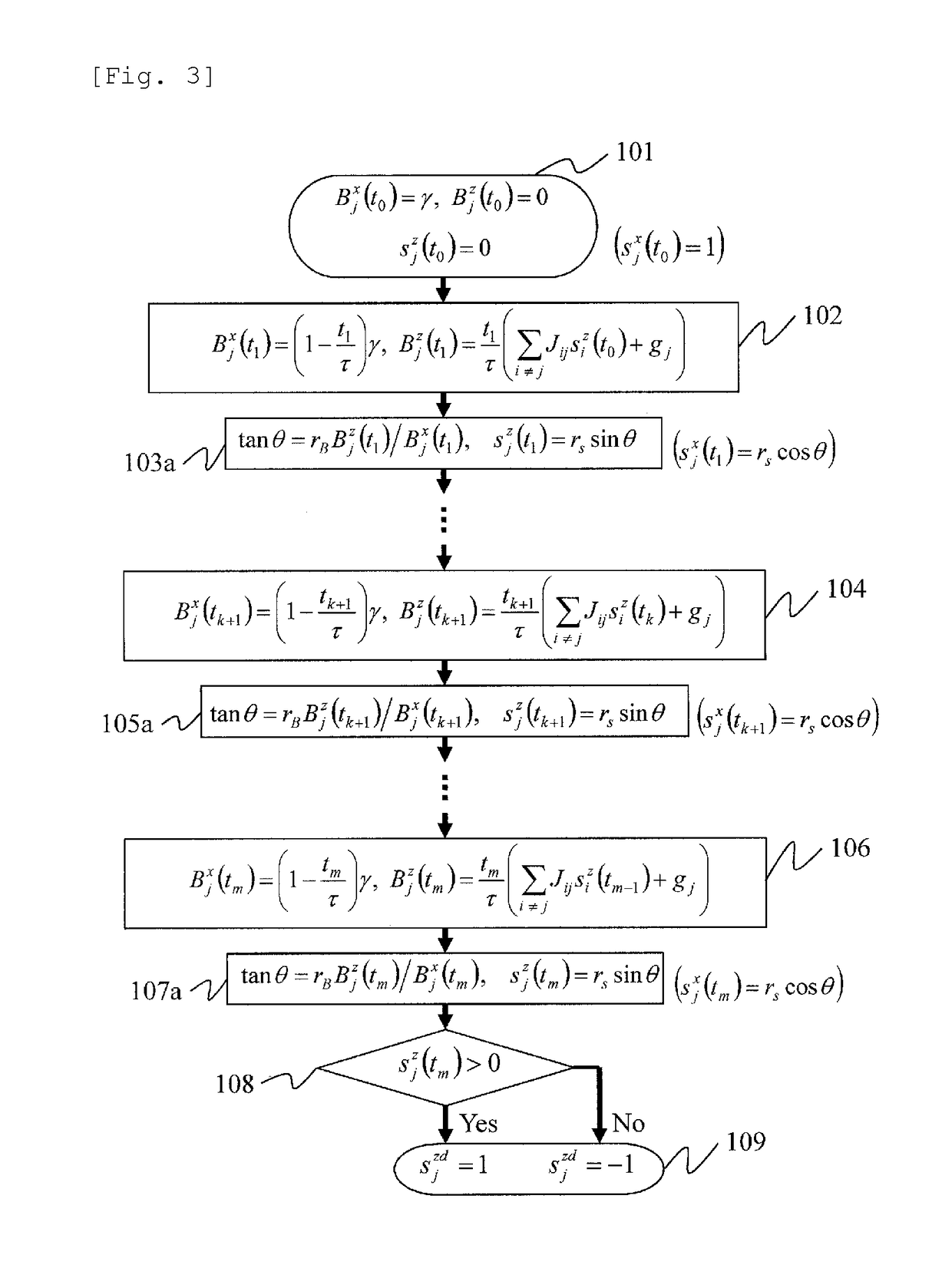Computer
a computer and computer technology, applied in the field of computers, can solve the problems of no efficient algorithm that obtains the initial value, difficult to make clear, and a lot of complicated problems, and achieve the effect of widening the range of usable resources
- Summary
- Abstract
- Description
- Claims
- Application Information
AI Technical Summary
Benefits of technology
Problems solved by technology
Method used
Image
Examples
embodiment 1
[0051]Embodiment 1 describes the principle of the present embodiment, starting to describe it quantum-mechanically and transforming it to a classical form.
[0052]A problem for searching for the ground state of Ising spin Hamiltonian given by Equation (3) includes problems classified so-called NP-hard and is known to be a useful problem (NPL 3).
H^p=-∑i>jJijσ^izσ^jz-∑jgjσ^jz[Equation3]
[0053]Jij and gj are parameters for setting the problem, and σ̂jz is the z component of the Pauli spin matrix and takes the eigenvalue of ±1. i and j represent spin sites. The Ising spin is a variable that takes only ±1 as a value, and Equation (3) expresses an Ising spin system because the eigenvalue of σ̂jz is ±1. The Ising spin in Equation (3) does not need to be a spin as the name implies, and it may be anything physical as long as the Hamiltonian is described by Equation (3). For example, high and low states of a logic circuit can be associated with +1 and −1; vertical and horizontal polarizations...
embodiment 2
[0076]In Embodiment 1, we have transferred quantum-mechanical quantities to classical quantities by taking expectation values using quantum-mechanical equations, and explained the algorithm for the classical quantities using FIGS. 1 and 2. Because a major object of Embodiment 1 was to describe the basic algorithm, the description was provided without including quantum-mechanical effects. However, if quantum mechanical effects are added, an improvement in the success probability of solutions or that in computation speed can be expected. Thus, Embodiment 2 describes a method of adding correction parameters based on quantum mechanics in order to improve the performance although the algorithm itself is classical.
[0077]The characteristics of quantum mechanics include a linear superposition state and quantum entanglement (non-local correlation). For example, let us consider a qubit that takes the two states of |0> and |1>. A linear superposition state is a sum state like |Ψ>α|0>+β|1>. The...
embodiments 3
[0087]In Embodiments 1 and 2, we have described the principle of the computation and the computation algorithm. In Embodiments 3, we will describe a configuration example of running the algorithm on an apparatus.
[0088]FIG. 4 illustrates an example of a configuration of a computing apparatus according to the present embodiment. The configuration in FIG. 4 is similar to that of an ordinary computing apparatus, but it includes a local-field response computing device 1000. The local-field response computing device 1000 specializes in the computation described in Embodiments 1 and 2, and other general computation is performed in a general computing device 202.
[0089]The configuration described above can be constructed from a single computer, or it can be constructed from different computers connected through a network, where arbitrary parts, such as a main memory device 201, a general computing device 202, a control device 203, an auxiliary storage device 204, an input device 205, or an o...
PUM
 Login to View More
Login to View More Abstract
Description
Claims
Application Information
 Login to View More
Login to View More - R&D
- Intellectual Property
- Life Sciences
- Materials
- Tech Scout
- Unparalleled Data Quality
- Higher Quality Content
- 60% Fewer Hallucinations
Browse by: Latest US Patents, China's latest patents, Technical Efficacy Thesaurus, Application Domain, Technology Topic, Popular Technical Reports.
© 2025 PatSnap. All rights reserved.Legal|Privacy policy|Modern Slavery Act Transparency Statement|Sitemap|About US| Contact US: help@patsnap.com



